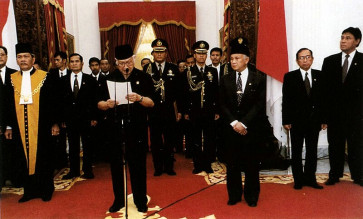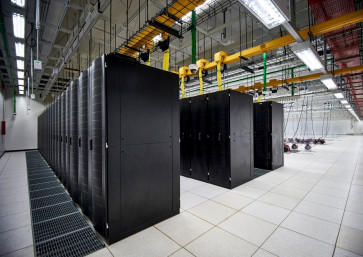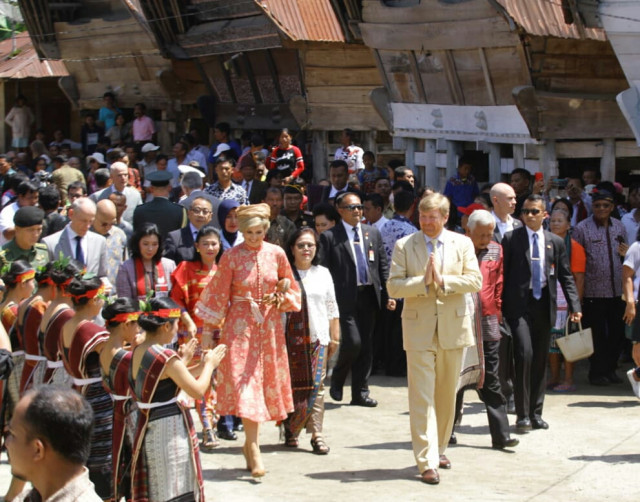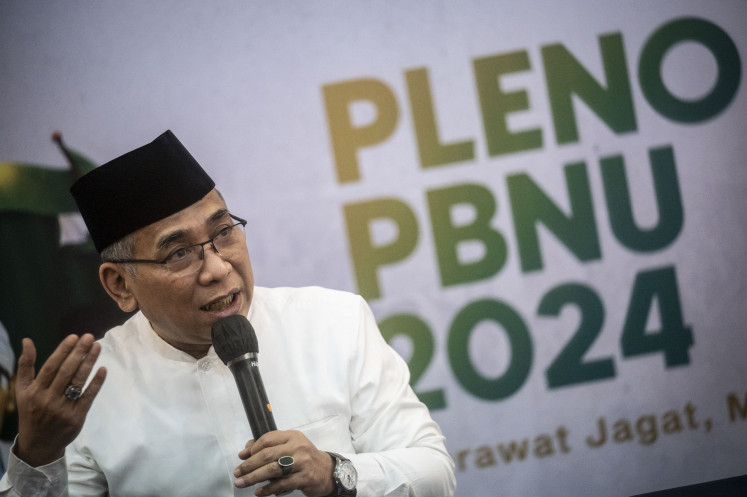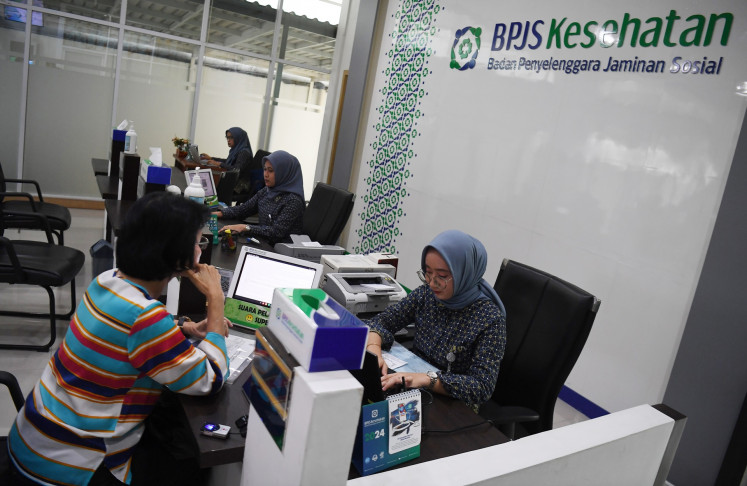Popular Reads
Top Results
Can't find what you're looking for?
View all search resultsPopular Reads
Top Results
Can't find what you're looking for?
View all search resultsBorrowed standards, buried sovereignty: Indonesia’s nuclear dilemma
When it comes to nuclear development, Indonesia must dig deep to ask the tough questions to expose the underlying geopolitical currents and whether what we're being offered will truly lead to energy sovereignty, or if we're being cast as the proverbial canary in the coal mine.
Change text size
Gift Premium Articles
to Anyone
I
ndonesia’s nuclear plans have often been explained as a matter of technical readiness. In reality, it is not only about energy or engineering but also about where we are placed in the global order. What looks like cooperation is often someone else’s positioning.
From 2017 to 2024, construction began on 52 nuclear reactors worldwide. None used American technology. Most were built with Chinese or Russian backing, not because their designs were always better, but because the two states offered complete packages: funding, construction, training and fuel. This was not just business; it was strategy.
In contrast, the United States has yet to operate a commercial small modular reactor (SMR), the same model that is now being offered to Indonesia.
In 2023, Indonesia Power, a subsidiary of state electricity company PLN, signed a deal with the US Trade and Development Agency to study NuScale’s SMR for use in West Kalimantan. The agreement went ahead, not because the technology is proven, but because the offer came with a narrative of trust and modernity.
In intelligence terms, this isn’t classic spying. It’s called shaping: the act of influencing a country’s future choices using soft tools such as grants, training, partnerships and embedded consultants. Once a country adopts an outside standard, it takes on the burden of audits, fuel shipments, service contracts and dispute mechanisms. These are no longer controlled domestically.
This doesn’t mean cooperation is wrong, but not every agreement is strategic. Some are simply responses, made quickly and under pressure with little room to think. In high-risk sectors like nuclear, that gap becomes the entry point.
Indonesia is not under occupation, but it is being steered. The vulnerability isn’t financial; it is deeper. We’re fluent in borrowed language but disconnected from our internal tempo. This is epistemic drift, when the ability to frame decisions slips away. It’s a kind of institutional disorientation, where familiar processes mask a loss of orientation. And it makes steering easy.
As imported models entered, we accepted urgency. Visibility became a performance, reports replaced reflection. Projects went ahead not because they were ready, but because they looked like progress. But nuclear energy doesn’t forgive performance. It needs consistency, discipline and integrity that doesn’t bend.
The danger isn’t just NuScale or any other vendor. The real risk is losing the judgment to stop, to pause, to ask.
The same is true with thorium. It sounds cleaner and more local. But even thorium molten salt reactors haven’t reached global maturity. Yet US-based ThorCon has signed early agreements in Indonesia to deploy one in Bangka. The pattern is the same: Indonesia has become a place to test something not even used at home.
Russia has also floated its own version of mobile nuclear reactors: a barge-based platform like the Akademik Lomonosov. If this is offered to Indonesia, the issue still holds: We are not the ones setting the terms. It doesn’t matter whether the vendor is American, Russian or Chinese. The structure remains: We are inside a map drawn by others; the route is offered, but the direction is not ours.
People ask, why not partner with China’s thorium initiative? But the issue isn’t the vendor. It’s the frame. Whether it comes from Washington, Moscow or Beijing, Indonesia is not the architect. The design has been made and we forget it. We confuse visibility with sovereignty.
This became clearer to me recently while listening to a former Indonesian intelligence chief explain publicly how foreign intelligence now operates through influence, not infiltration: no cloak, no covert entry. Instead, decisions are shaped through platforms, advisors and timed offerings.
Looking through the intelligence lens helps us understand how this pattern stays hidden. Intelligence frameworks used by major powers often follow a predictable structure of what the US military calls the intelligence cycle: direction, collection, processing, analysis, dissemination. Combined with phase zero shaping operations, these tools are not about secrecy, but design. They work by influencing environments before decisions are even made.
Whether through memorandums of understanding, technical grants, policy workshops or embedded advisors, the result is the same: placement without resistance. While the National Research and Innovation Agency (BRIN), PLN and the Nuclear Energy Regulatory Agency (Bapeten) speak about readiness, the environment is being shaped to fit external needs.
None of this requires secrecy. Intelligence works in the open through workshops, study tours, grants. The cycle is public. Find the fast lanes, identify who delays, who signs, who smiles, then adjust. In a state with a fragmented elite and soft enforcement, the stage is ideal.
This is what happens when a country is moved without knowing. The threat isn’t military; it is mental. Singapore delays its nuclear path not because it cannot build, but because it won’t hand over the long game to others.
We speak in foreign terms without always knowing what they cost. The dependence that follows is not accidental, it is arranged. When foreign platforms arrive, they come with decision logic already installed. Nuclear is just the visible part; the real change is institutional.
The real question isn’t whether Indonesia can build nuclear. It’s whether it can govern it without being steered. If we go ahead with systems others won’t use at home, we aren’t leading. We’re being used.
The reactor isn’t the problem, but the terms. Nuclear energy, when built under the wrong conditions such as rushed timelines, borrowed standards or foreign-calibrated incentives, turns into a long-term submission.
The issue is not the technology: It is the conditions under which it is adopted, and whose timeline it serves.
Those trained in nuclear reactor may think they are shaping a system. But be honest: Who sets the terms? Who draws the map?
If we must act, let it not be from borrowed pride or external praise. Let it be from conscience and clarity. Let the driver be what is right, not what is available.
This is harder, but it’s still the only path that won’t leave us repeating someone else’s plan, on our own soil, with someone else’s clock ticking.
***
The writer is an affiliate alumnus of MIT Sloan School of Management and alumnus of the nuclear engineering department at the Gadjah Mada University School of Engineering.



